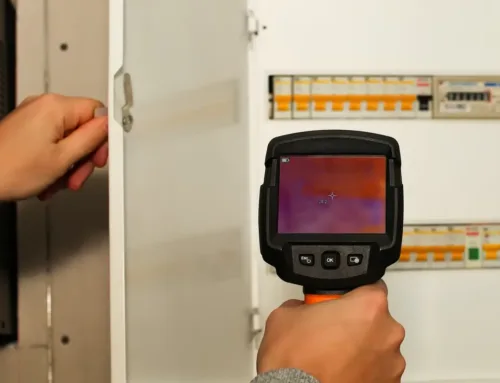Now that you’ve got your Real Estate Agent Facebook Page up and running, it’s time to start getting leads with real estate Facebook ads!
Of course, it’s a nice idea to think that dozens of leads will magically connect with you on social media and want to do business, but we know that isn’t the case.
And can be really frustrating. We heard from agents all the time who are doing awesome things to organically grow their Facebook page and get the word out about their real estate expertise, but this can only go so far. You need to stand out on Facebook and make an impression. But you can’t do this if people can’t find you. Let’s put this into perspective.
Worldwide, there are over 1.79 billion monthly active Facebook and five new profiles are created every second, according to Zephoria Digital Marketing. So, if you’re ready to see some return on your diligent marketing efforts, it’s time to invest. In Facebook ads.
Being your own boss also means, in most case, being your own social media manager. One of the most important things you’ve got to be able to do is leverage real estate Facebook Ads for your business. If you play spend your ad dollars right, you can exponentially increase your reach and convert more leads without wrecking your budget.
Here’s how to set up Real Estate Facebook ads!

#1) Read This First
The first thing you need to do is familiarize yourself with some fundamental terminology of Facebook advertising. You can access Facebook’s full glossary here. But here are the top terms you should know right now.
Actions
The number of actions taken on your ad, Page, app or event after someone viewed your ad, even if they didn’t click on it. Actions include Page likes, app installs, conversions, event responses and more. For example, 2 Page likes and 2 comments would be counted as 4 actions.
Ad Account
Grouping of all your specific ads activity. Your ad account includes different campaigns, ads and billing information.
Ads Manager
This is where you will create and manage your real estate Facebook ads. You can:
- Create and run your ads
- Target your ads to the people you care about
- Set your budget
- See how your ads are performing
- See your billing summary, payment history and payment method info
You can find Ads Manager by going to https://www.facebook.com/ads/manager.
Audience
Your audience is the group of people you’re creating the ad for.

Campaign
The name of the ad campaign you’re viewing in reporting. Your campaign contains ad sets and ads.
Clicks
The total number of clicks on your ad. This may include offsite clicks to your website, Page likes, post comments, event responses or app installs.
Conversion Tracking Pixel
A conversion pixel is a piece of JavaScript code that places a blank 1×1 pixel image on your website. When someone visits a page of your website where you have installed a conversion pixel, the pixel will ping Facebook and record their visit and information such as whether they saw any of your ads. Conversion pixels are used to to track if a person has landed or converted on a specific web page (ex: adding a product to a cart or clicking a button to buy a product).
CPC
The average cost for each click attributed to your ads.
Daily Budget
This is the amount you’ve indicated you’re willing to spend on a specific ad set per day on average. Each ad set will have a separate budget, so keep this in mind if you have more than one active ad set in your account. Learn more about choosing a daily budget for your ad set.
Impressions
The number of time your ad was viewed.
Lifetime Budget
A lifetime budget lets you set an amount to spend over the lifetime of an ad set. Our system will automatically try to evenly spread the amount you spend across the period of time that you’ve selected.
Lookalike Audiences
This is a type of audience that’s created by Facebook to help advertisers reach people who are similar to an audience that they care about.
Objective
The objective you selected for your campaign. Your objective reflects the goal you want to achieve with your advertising.
Reach
The number of people who saw your ads at least once. Reach is different from impressions, which may include multiple views of your ads by the same people.
Reports
Reports are the documentation of your most important ad metrics that can show you how you’re reaching your business goals. You can access reports in Ads Manager.
Targeting
This is the process of defining an audience for your ads.
#2) Goals For Guidance
To get results, you first need to set some goals for your real estate Facebook ads. Let’s say that you want to generate 100 leads this week with facebook ads for real estate. If that number seems lofty, you can always scale it back but why limit your potential before you’ve even tested your first ad?

Allow goals to guide your ad strategy. If you don’t know what results you want, you’ll never get them. For our purposes, let’s say that we want to create an ad that gets our Facebook audience back to our website.
#3) GET LEADS
It’s time to create your first real estate Facebook ad and get more leads! This part should look familiar. You’ll be going back to the same page you visited to first create your real estate Facebook page.

Click on Create an Ad and let’s get started!
#4) Mission: Possible – Choose Your Objective
The first thing you’ll do is determine your campaign objective. In keeping with the initial goal we set for ourselves earlier, let’s choose an objective that will support generating more web traffic.

As you can see, there are three main categories and a lot of options in each. You can either focus on boosting Awareness, Consideration or Conversion.
When you hover your mouse over each specific objective you can find out more about it. Since we want to drive qualified traffic to your real estate website, let’s choose the first objective option under the Consideration column: Send people to a destination on or off Facebook.
When you click on that option you’ll be taken to this page.

Then all you have to do is name your Campaign so you can track the progress and click Continue.
#5) Set The Stage For Success
Here’s where things get really interesting. It’s time to choose your target audience. This may very well change over time. If you’re unsure who your target demographic is, make it a priority to figure it out this year so you can know who you’re creating content for and serving in your community.
Whether you’re 100% certain of your audience or not, there are a few things that you can start with to begin reaching prime customers and converting them to qualified leads.

These are the demographics we have used previously to target buyers and sellers.
The first targeting option to fill out is the Location, which is basically a no-brainer. Start with your area, or the closest major city to you and add about a 25 mile radius to cover surrounding neighborhoods and towns.
Next, move on to Age. If you need to, you can keep this pretty broad to start. In the audience above, we started to target ages 25-55. That’s a fairly huge margin, but these are all age groups that could easily be looking to purchase their first home, relocate for work or sell a property.
We then targeted both men and women, skipped the Languages section and moved on to Relationship Status. The big three are: In a relationship, married and engaged. You can then move onto Education Level and Income. When you’re starting out, it’s a safe bet to target groups with at least some level of higher education – really anywhere from two to four-year degree. As for income, try setting it at $50k-$125k+ a year. Finally, move onto Behaviors and type in “Likely to move.”
And you’ve now created a targeted audience for your first Facebook ad.
#6) Get Seen
After selecting your audience, you’ll see the Placements section. This will determine where your ad appears across platforms.
- Facebook feeds (mobile and desktop)
- Facebook right-hand column
- Audience Network
- Instant Articles
- In-stream Video

At this point, it’s easiest to leave Automatic Placements selected and let Facebook optimize the placement of your ad for you.
#7) Your Time And Money
Now it’s time to decide where to put those ad dollars and how much of your marketing budget to allot to your first campaign.

You’ll want to set the budget at something around $200-$500 per month. I recommend starting with $350 a month. Real estate Facebook ads really create a scale-able source of leads for you. You can turn them up or down and spend what you want to on them. At $350 a month, this will put your daily budget at about $11.67 per day.
It’s important to remember that you need to give your ads time to perform so you can meet your goals. Putting $20 a day behind an ad for only 3 days and spending $60 is really a waste of money. Decide how much you can commit to the lifetime budget of your ad, assuming you’ll run it for a month, and go from there. If you’re not seeing the results you want in that time, you can always switch things up.
If you click Show Advanced Options, you’ll be given even more spending choices.

You’ll want to manually set your bid per click – the second option under Bid Amount. Set the Bid $.10 over the highest recommended amount. Your bid amount determines how effectively Facebook can optimize your ad delivery and competes in an auction with other advertisers, who also want to reach the same target audience.
You can also decide if you want your ad to run all of the time or only at specific hours and days of the week. This might be a good option so you can test how your ad performs at different times of day and this can also give you a good idea about when to post content because you’ll have a sense of when your audience is most active.
#8) Let’s Get Visual
Okay, the hard part is over. It’s time to have some fun! You’ll now get to decide how your real estate Facebook ad looks to your audience. And you’ve got a bunch of options.

You can choose from the following options:
Carousel – Create an ad with 2 or more scrollable images or videos
Single Image – Make up to 6 ads with one image each at no extra charge
Video – Upload an ad with one video
Slideshow – A looping video ad with up to 10 images
Canvas – Tell an immersive story by combining images and videos.
Once you choose your ad format, you can then fill in all the details.

Your Headline
This is where you’ll grab people’s attention and tells them what your ad is about.
Description
The description is additional text about the product such as price, promotion, etc.
Destination URL
Make sure to include the URL to the page on your website you want this real estate Facebook ad to link to!
#9) Seal The Deal
When you’ve got everything looking just right, it’s time to check out! Place your order and you’re done! Facebook will now review your ad to ensure it meets their guidelines and will send you an email once it’s approved and active.

#10) Report And Repeat
When you open your Ads Manager tab, you’ll see this screen. As you create ads, this is where you can keep up with their success and results.

You can export a report for any campaign and this will give you solid numbers to refer back to as you continue to create even more real estate Facebook ads to promote your business and expertise.

That’s it! You’re finished! Congratulations. You’ve just successfully created your first real estate Facebook ad in just 10 Steps! The best part? You can now create as many ads as you want! Play with different formats, target different audiences and have fun!
Owner & Operator,
Chad Hett
The Elite Group
Largest Home Inspection Company in North America
Best Selling Author “Secrets Of Top Producing Real Estate Agents: And How To Duplicate Their Success.”




